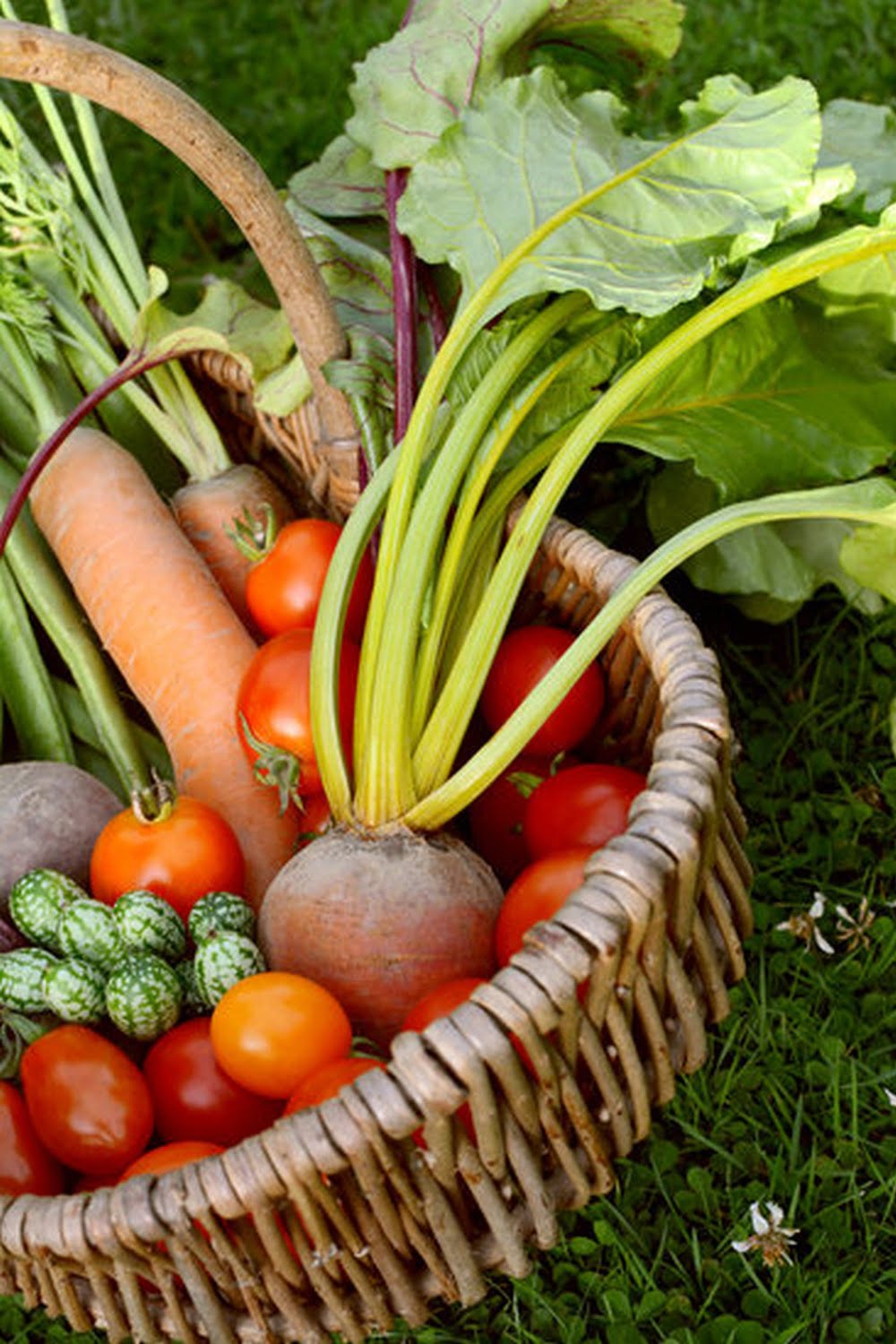Gardening in clay soil can present its own set of challenges, especially when it comes to growing vegetables. Clay soil, with its dense and compacted nature, can make it difficult for plant roots to penetrate and access essential nutrients and water. However, with proper soil management techniques, it is still possible to create a thriving vegetable garden even in clay soil conditions.
Understanding the unique properties of clay soil is crucial for successful gardening. Clay soil is characterized by its fine particles and high water-holding capacity, which can lead to poor drainage and compaction issues if not managed properly. Despite these challenges, clay soil also has some benefits such as excellent nutrient retention capabilities.
To prepare clay soil for vegetable gardening, it is important to focus on improving its structure and drainage. Techniques such as tilling or double-digging can help break up compacted layers and allow for better root penetration. Adding organic matter, such as compost or well-rotted manure, can enhance the fertility of clay soil and improve its overall texture.
In summary, despite the potential difficulties associated with gardening in clay soil, with proper preparation and techniques, it is possible to grow a successful vegetable garden. By understanding the characteristics of clay soil and implementing strategies to enhance its structure and drainage, gardeners can overcome these challenges and enjoy a bountiful harvest of vegetables.
The following sections will provide more specific information on preparing clay soil for gardening purposes, selecting suitable vegetable varieties, proper planting techniques, irrigation considerations, nutrient management practices, pest control strategies specific to clay soil conditions, maintaining long-term soil health, as well as helpful tips for harvesting your vegetables in this unique type of soil environment.
Understanding Clay Soil
Clay soil poses unique challenges and advantages for vegetable gardening. It is important for gardeners to have a good understanding of the characteristics and properties of clay soil in order to successfully manage their garden. By identifying and addressing these specific qualities, gardeners can create an environment that allows vegetables to grow and thrive.
Characteristics and Properties of Clay Soil
Clay soil is made up of fine particles that stick together, resulting in a dense and heavy texture. It has poor drainage capabilities due to its compact nature, which can lead to waterlogging and root rot if not managed properly. Additionally, clay soil tends to dry out slowly, making it prone to becoming hard and compacted when dry.
Despite its challenges, clay soil also has some beneficial properties. It generally has high nutrient content as clay particles hold onto minerals more effectively than other soil types. This means that with proper management, clay soil can be quite fertile for growing vegetables.
Gardening Challenges and Benefits
Gardening in clay soil requires different strategies compared to other types of soil. The main challenge lies in improving the structure and drainage of the soil while ensuring sufficient aeration for roots. However, with proper management techniques, clay soil can be transformed into a highly productive growing medium.
One benefit of clay soil is its ability to retain moisture better than sandy or loamy soils. This can be advantageous during periods of drought or water scarcity, as less irrigation may be needed. Additionally, the nutrient-rich nature of clay can provide an excellent base for plant growth once appropriate amendments are made.
Identifying Clay Soil
Before implementing any specific gardening techniques for clay soil, it is crucial to confirm whether or not your garden has this type of soil composition. There are a few methods you can use to identify if you have clay soil:
- Texture test: Take a handful of moist soil and try to roll it into a ribbon. If the soil forms a smooth and flexible ribbon, it is likely clay soil.
- Observation: Clay soil tends to crack when it dries out and becomes hard. Look for these characteristic cracks in your garden beds.
- Consulting local resources: Local soil surveys or contacting your county extension office can provide information on the predominant soil types in your area.
By understanding the unique characteristics of clay soil, gardeners can make informed decisions about how to appropriately manage their vegetable gardens for optimal growth and productivity.
Preparing Clay Soil for Vegetable Gardening
Preparing clay soil is essential for ensuring successful vegetable gardening. Clay soil, with its high water retention and poor drainage, can pose challenges to plant growth and root development. However, with proper soil preparation techniques, it is possible to improve the structure and fertility of clay soil, creating an ideal environment for vegetable plants.
One of the most important steps in preparing clay soil is improving its structure and drainage. This can be achieved by incorporating organic matter into the soil. Organic matter, such as compost or well-rotted manure, helps break up compacted clay particles, allowing for better air circulation and water movement. It also adds nutrients to the soil and promotes microbial activity.
Another technique for improving clay soil is practicing crop rotation. By alternating crops in different areas of the garden each year, you can help prevent the depletion of specific nutrients and reduce the risk of pest and disease buildup. Additionally, cover cropping with plants like clover or winter rye can enhance soil structure over time by adding organic matter and preventing erosion.
To further enhance fertility in clay soil, it is important to adjust nutrient levels according to the specific needs of vegetable plants. Conducting a soil test can provide valuable information about the pH level and nutrient deficiencies or excesses in your soil. Based on these results, you can amend your clay soil with appropriate fertilizers or organic amendments to provide optimal conditions for plant growth.
| Organic Amendment | Description |
|---|---|
| Compost | Decomposed organic matter that improves moisture retention and nutrient availability. |
| Worm Castings | Nutrient-rich waste produced by worms that improves soil structure and fertility. |
| Peat Moss | Organic material that helps retain moisture and loosens compacted clay particles. |
Selecting Vegetable Varieties for Clay Soil
When it comes to gardening in clay soil, selecting the right vegetable varieties is crucial for success. Clay soil can pose challenges such as poor drainage and compaction, making it essential to choose plants that are well adapted to these conditions. Fortunately, there are several vegetable varieties that thrive in clay soil and can yield a bountiful harvest.
One important factor to consider when choosing suitable vegetable cultivars for clay soil is their root system. Vegetables with deep-rooted systems tend to perform better in clay soil because they can penetrate the heavy texture and access moisture and nutrients deeper in the ground. Additionally, vegetables that have a higher tolerance for poorly drained soils are ideal for clay conditions.
| Vegetable | Description |
|---|---|
| Carrots (Daucus carota) | Carrots have taproots that help them grow through compacted clay soil. |
| Potatoes (Solanum tuberosum) | Potatoes are known for their adaptability and can tolerate heavy soils like clay. |
| Cabbage (Brassica oleracea) | Cabbage thrives in clay soil as it prefers cooler temperatures and well-drained soil. |
| Broccoli (Brassica oleracea) | Similar to cabbage, broccoli is a good choice for clay as it prefers cooler conditions. |
It’s also important to look for vegetable varieties that have disease resistance, as clay soil can retain moisture and create a favorable environment for fungal diseases. When purchasing seeds or seedlings, look for labels that indicate disease resistance to common issues prevalent in your area.
By selecting the right vegetable varieties for clay soil, you can increase the chances of a successful harvest. Don’t be discouraged by the challenges clay soil presents – there are plenty of vegetables that will thrive and reward you with delicious and nutritious produce.
Planting and Transplanting in Clay Soil
When it comes to planting and transplanting in clay soil, there are several techniques that can help ensure successful growth and development of vegetable plants. With the right approach, gardeners can avoid compaction, improve water infiltration, and maximize their harvest.
Tips for Proper Planting Techniques in Clay Soil
One of the most important considerations when planting in clay soil is to make sure that the soil is not overly saturated. If the soil is too wet, it can lead to poor root development and increased susceptibility to diseases. Wait until the soil has dried out slightly before working it and planting.
When digging holes for transplants or seeds, it’s essential to create a hole that is wide enough to accommodate the size of the plant’s roots. This allows the roots to spread out easily and establish themselves in the clay soil. Planting too shallow can result in limited root growth, while planting too deep may cause poor aeration.
How to Avoid Compaction and Improve Water Infiltration
Clay soil has a tendency to become compacted, making it difficult for plant roots to penetrate and access nutrients and water. To prevent compaction, avoid stepping or walking on the soil as much as possible. If necessary, use wooden boards or stepping stones to distribute weight evenly.
To improve water infiltration in clay soil, incorporate organic matter into the planting areas by mixing compost or well-rotted manure into the top few inches of soil. The addition of organic matter will help break up compacted clay particles, allowing for better drainage and enhanced root growth.
Timing and Spacing Considerations for Clay Soil Gardening
Timing plays a crucial role when planting in clay soil as it tends to retain moisture longer than other types of soils. Therefore, it is important to delay planting until after the danger of frost has passed and the soil has had a chance to dry out slightly.
When spacing plants in clay soil, ensure adequate room for root development. Overcrowding plants can result in increased competition for nutrients and water, leading to reduced growth and lower yields. Be sure to follow the spacing recommendations provided on seed packets or plant tags.
By following these planting and transplanting techniques specific to clay soil, gardeners can set their vegetable plants up for success. Proper planting practices will help promote healthy root growth, minimize compaction, and optimize water infiltration, ultimately leading to thriving vegetable gardens despite the challenges posed by clay soil.
Watering and Irrigation in Clay Soil
One of the major challenges of gardening in clay soil is water management. Clay soil has a high water-holding capacity, which means it retains moisture for long periods. However, this can also lead to waterlogged conditions and poor drainage if not managed properly. Here are some strategies for effective watering and irrigation in clay soil:
- Monitor Soil Moisture: It is crucial to monitor the moisture level of your clay soil regularly. This can be done by digging a small hole about 6 inches deep and feeling the soil texture with your fingers. If it feels cool and slightly moist, then your soil has adequate moisture. If it feels wet and sticky or dry and crumbly, adjustments may need to be made.
- Watering Techniques: When watering in clay soil, it is important to apply water slowly and evenly to allow for proper absorption without causing runoff or erosion. Using soaker hoses or drip irrigation systems can be very effective in ensuring that water reaches deep into the root zone without wasting any.
- Watering Frequency: Rather than watering lightly but frequently, it is more beneficial to give clay soil a deep watering once a week rather than shallow watering multiple times a week. This encourages deeper root growth and helps plants become more resilient during dry spells.
- Mulching: Mulching around your vegetables helps regulate soil moisture by reducing evaporation and maintaining an even temperature in the root zone. Organic mulches such as straw or wood chips are particularly beneficial for clay soils as they break down over time, improving soil structure.
- Improving Drainage: If you are experiencing significant waterlogging issues with your clay soil, you may need to take additional steps to improve drainage. Consider incorporating organic matter such as compost or well-rotted manure into the top few inches of the soil to help break up compacted areas and create channels for better water movement.
Proper watering and irrigation practices are crucial for successful vegetable gardening in clay soil. By monitoring soil moisture, using appropriate watering techniques, and improving drainage if necessary, you can ensure that your plants receive adequate water while avoiding the common pitfalls associated with clay soils.
Fertilizing and Nutrient Management
When it comes to clay soil gardening, proper fertilizing and nutrient management are key to achieving successful and healthy vegetable cultivation. Clay soil has its own characteristics that impact the availability of nutrients to plants, making it crucial for gardeners to understand these properties and adjust their fertilization practices accordingly.
One important aspect of clay soil’s nutrient management is its tendency to retain nutrients. The dense structure of clay particles holds onto essential elements like nitrogen, phosphorus, and potassium, preventing them from leaching away quickly. While this can be beneficial in terms of reducing fertilizer loss, it also means that plants may have limited access to these nutrients if they are not properly supplied.
To ensure optimal fertility in clay soil, gardeners should regularly test the soil’s nutrient levels. Soil testing allows them to determine the specific needs of their garden and make informed decisions regarding fertilizer application. By understanding which nutrients are deficient or excessive in the soil, gardeners can choose the appropriate organic or conventional fertilizers to balance nutrient levels effectively.
In addition to traditional fertilizers, adding organic matter is a valuable practice in clay soil gardening. Organic matter, such as well-rotted compost or manure, improves soil structure, enhances water retention capacity, and boosts microbial activity. These factors contribute to better nutrient availability for plants growing in clay soil. Gardeners can incorporate organic matter by applying it as a top dressing before planting or by tilling it into the soil during preparation.
By implementing proper nutrient management techniques like regular soil testing and adding organic matter, gardeners can create an environment where vegetables grown in clay soil receive adequate nourishment throughout their growth cycle. This ensures healthy plant development, higher yields, and overall success in clay soil gardening.
- Regularly test the nutrient levels of clay soils.
- Choose organic or conventional fertilizers based on specific deficiencies.
- Add organic matter, such as compost or manure, for improved nutrient availability.
- Top dress or till organic matter into the soil.
Controlling Weeds, Pests, and Diseases in Clay Soil
When gardening in clay soil, it is important to be aware of the potential challenges that weeds, pests, and diseases can pose to your vegetable plants. However, with proper management strategies, you can keep these issues under control and maintain the health of your garden.
One of the common problems faced in clay soil gardens is weed infestation. Clay soil tends to hold moisture for longer periods of time, creating a favorable environment for weed growth. To manage weeds effectively, it is essential to take proactive measures such as regular weeding and mulching.
Hand-pulling weeds or using a hoe can be effective methods for removing them from your garden beds. Applying organic mulch around your plants can help suppress weed growth by blocking sunlight and reducing weed germination.
Pests and diseases are another challenge that gardeners may encounter when growing vegetables in clay soil. Insects such as aphids, slugs, and caterpillars can feed on the leaves and fruits of your plants. To prevent pest infestations, it is important to inspect your plants regularly for signs of damage or presence of pests. Natural pest control methods such as introducing beneficial insects or using organic pest sprays can help combat the problem.
In terms of diseases, clay soil retains more moisture which creates conditions favorable for certain fungal diseases like powdery mildew or root rot. Good garden hygiene practices such as spacing plants properly to allow air circulation can help minimize the risk of fungal infections. Additionally, avoiding overhead watering and opting for drip irrigation or soaker hoses can prevent water from splashing on foliage and reduce the likelihood of disease development.
By being vigilant about weed control, implementing preventive pest management strategies, and practicing good plant hygiene practices, you can effectively control common weed infestations as well as reduce the risks associated with pests and diseases in clay soil gardening. Regular monitoring of your garden will enable you to catch any issues early on and address them promptly, helping to ensure the health and productivity of your vegetable plants.
Harvesting and Maintaining Soil Health
Once you have successfully grown your vegetables in clay soil, it is important to know when to harvest them. The readiness for vegetable harvest in clay soil can vary depending on the specific crop, so it is crucial to understand the signs of readiness for each type of vegetable.
For example, common indicators of readiness include the color change or full formation of fruits like tomatoes or peppers, the size and hardness of root crops like carrots or potatoes, and the tenderness or size of leafy greens like lettuce or spinach.
After harvesting your vegetables, it is essential to maintain the health of your clay soil for long-term gardening success. One important step is to remove any plant debris from the garden bed. Plant debris left on the soil’s surface can create a habitat for pests and diseases that may harm future crops. By removing this debris promptly after harvest, you can help prevent potential issues and maintain a healthier garden environment.
Another key practice in maintaining soil health is incorporating organic matter back into the clay soil. Organic matter provides nutrients to the soil, improves its structure, and enhances its ability to retain moisture while allowing for proper drainage. Adding composted materials such as well-rotted manure, leaf mold, or kitchen scraps can be highly beneficial. These organic amendments not only nourish the plants but also feed beneficial microorganisms that promote overall soil health.
To further enhance and protect your clay soil between growing seasons, consider incorporating cover crops into your rotation plan. Cover crops are planted specifically to benefit the soil rather than being harvested for consumption. They help reduce erosion, suppress weeds, prevent nutrient leaching, and improve fertility by fixing atmospheric nitrogen into a usable form for subsequent crops.
By implementing these practices after harvesting your vegetables in clay soil, you are promoting long-term soil health and fertility while also setting yourself up for more successful gardening seasons in the future. Remember that maintaining a robust and thriving garden starts with a healthy foundation, and good soil management is crucial every step of the way.
Conclusion
In conclusion, clay soil gardening can be challenging, but with proper soil management and the use of appropriate techniques, it is possible to have a successful vegetable garden. Understanding the characteristics and properties of clay soil is crucial in order to address its unique challenges and benefits. By preparing the soil properly, selecting suitable vegetable varieties, implementing effective planting and transplanting techniques, and providing adequate watering, irrigation, fertilization, and nutrient management, you can overcome the obstacles presented by clay soil.
One of the key takeaways from this article is the importance of adding organic matter to enhance clay soil’s structure and fertility. This helps improve drainage, prevent compaction, and provide essential nutrients for plant growth. It is also essential to balance soil fertility through organic and conventional fertilizers and regularly test the soil to adjust nutrient levels accordingly.
Furthermore, controlling weeds, pests, and diseases is crucial in maintaining plant health in clay soil. By taking proactive measures such as proper weed management strategies and utilizing organic or chemical solutions when necessary, you can minimize potential damage to your plants.

If you’re looking to get into vegetable gardening, or are just looking for some tips on how to make your current garden better, then you’ve come to the right place! My name is Ethel and I have been gardening for years. In this blog, I’m going to share with you some of my best tips on how to create a successful vegetable garden.





